One thing that was totally predictable, though, was its colossal power and torque, making it the fastest production Bentley ever built.
The Continental GT, as a model in the VW-owned company’s range, celebrates its 10th birthday this year. “For he’s a jolly good fellow,” and all that. Right from its launch at the Paris Motor Show in Autumn 2002, the ‘small’, usable Bentley, soon to be seen in significant numbers on the streets of Tokyo, Beverly Hills and Kensington, has generated praise and condemnation in almost equal measure. Around 26,000 of the W12-engined, generous 2+2s have been sold, handing Bentley the accolade of being the largest manufacturer of 12-cylinder engines on the planet.
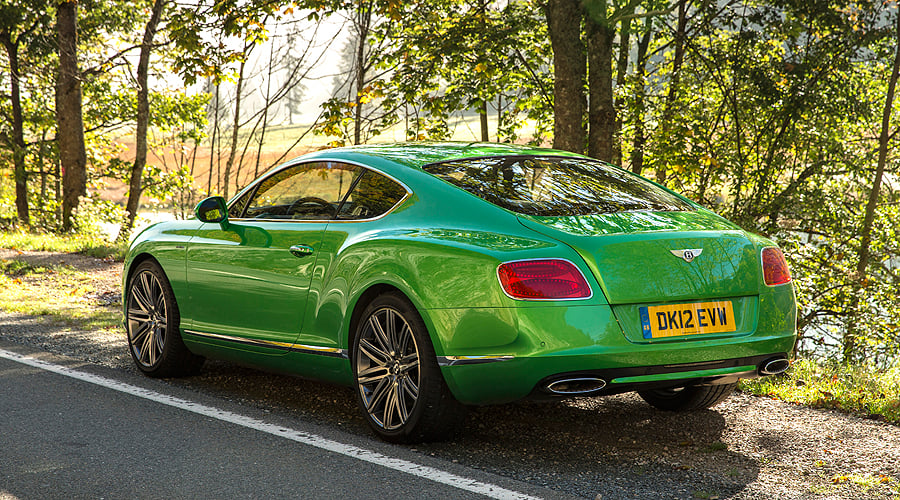
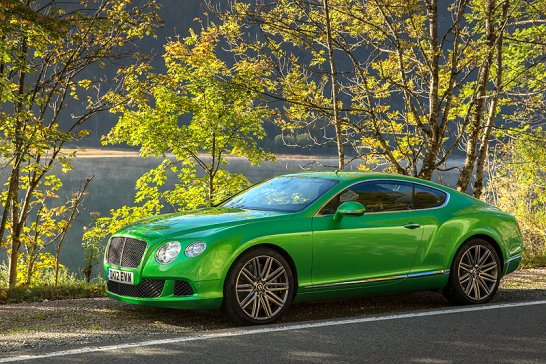
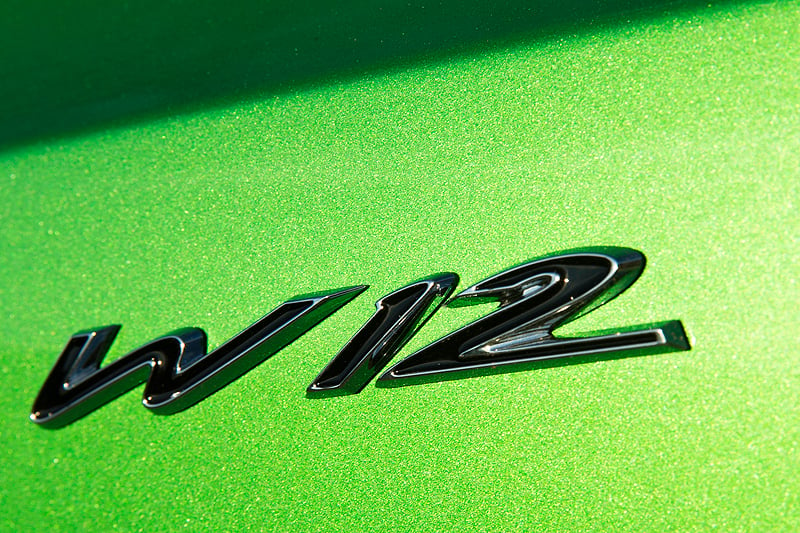
The new V8 Bentley might be nearly as fast, as well as more frugal and much easier on emissions, but it’s the original 6-litre W12 in the second-generation car that now receives the Speed treatment: and we’re here to drive it on de-restricted roads in Bavaria.
With a palette of over 100 colours to choose from, it came as a surprise to be behind the wheel of the bright apple green car you see here. Not an unpleasant surprise, though, and a welcome change from black or anthracite grey. For those looking past the bright colour, a dark grille, extra chrome trim, special tail-pipes and 21in wheels (as well as W12 badges on the sides) are the only clues to a package that will now cost from 204,000 euros (£151,000 in the UK) before extras.
You do get the Mulliner driving package as standard, and the 8-inch satellite navigation display, with 3G connectivity and access to Google mapping. And no Bentley would be complete without a degree of personalisation, as the customer in the Far East who specified that her (or his?) Bentley should be finished in a bright pink, ‘Hello Kitty’ paint scheme.
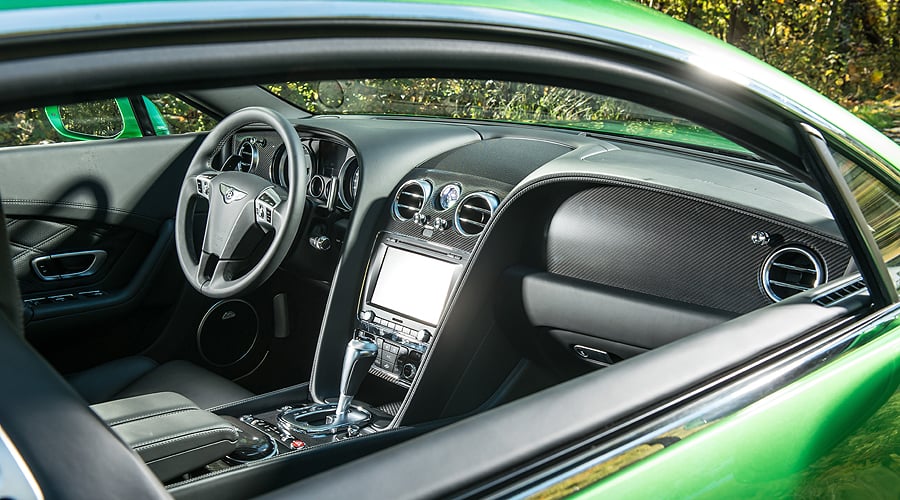
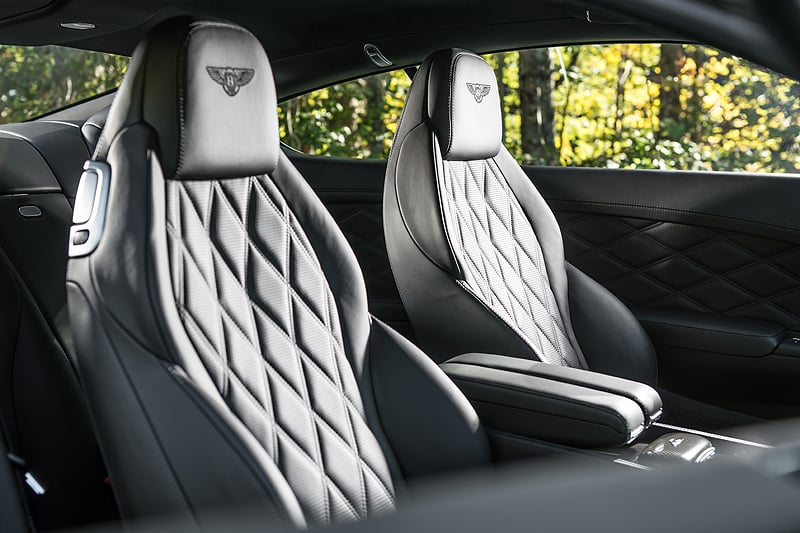
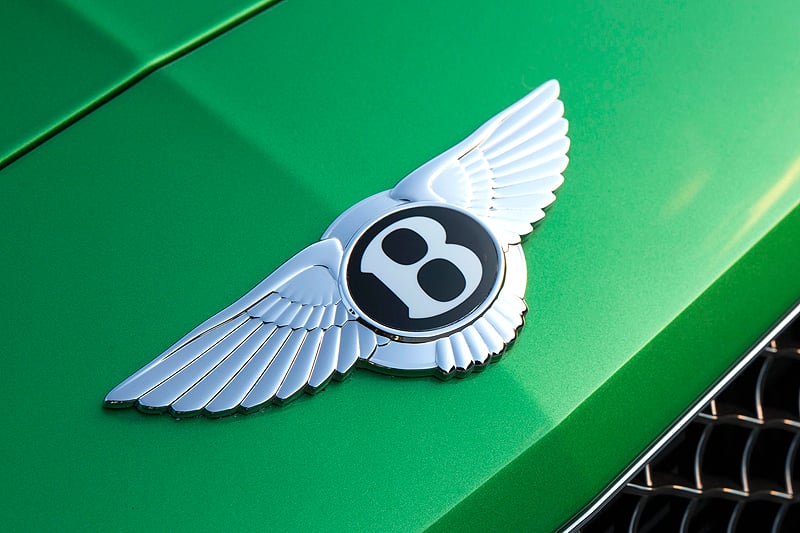
Other engines might have torque curves, but that of the latest Continental GT Speed can best be described as a ‘plateau’. From a first, tentative prod of the accelerator, 800Nm is available from just 2000rpm, endowing what is still quite a heavy car (2750kg) with enough twisting force to take it to 100km/h from standstill in just 4.2 seconds. A degree of heft and substance has its advantages. Few other sports cars are as stable or assured, riding the road - bumps and all - with consummate ease. The Speed’s engine produces 616bhp (compared with 567bhp of the regular W12) – enough for a top speed of 205mph (330km/h).
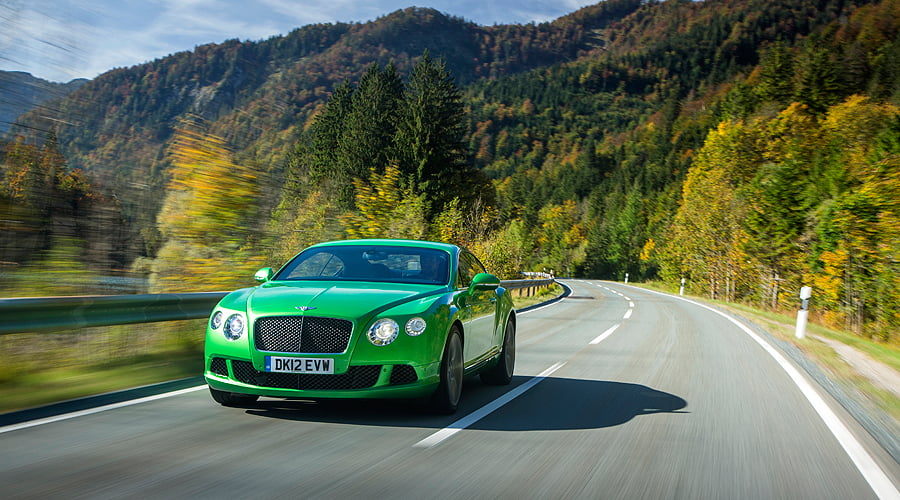
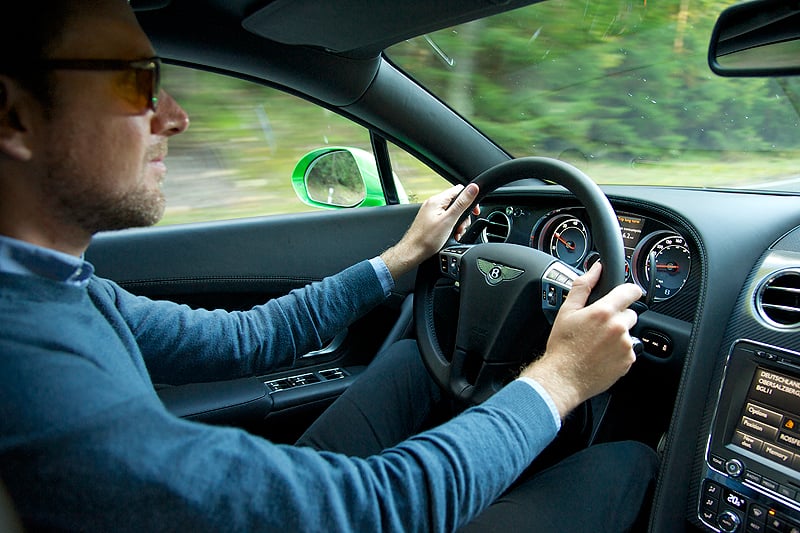
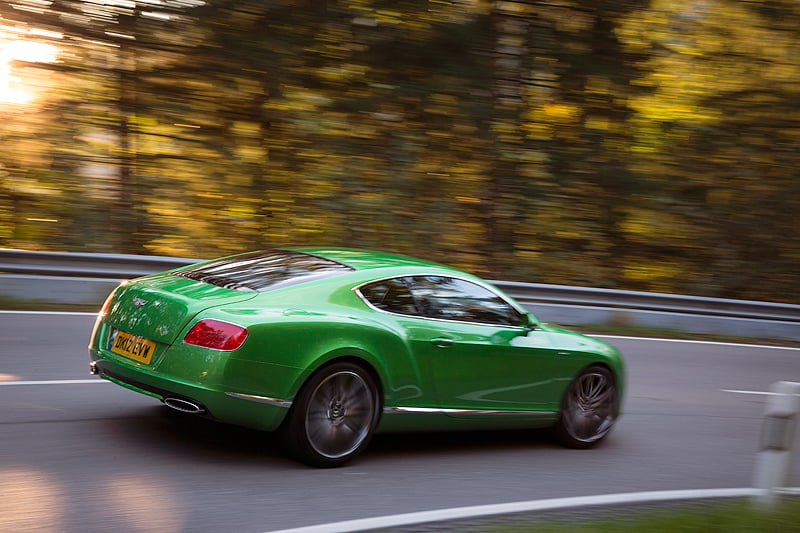
And the figures don’t stop there. With 4,000 litres of air per second swallowed by the front radiator, and the rear spoiler - when extended - generating downforce of 125kg, the car redefines the term ‘making the numbers’. Inside the familiar ‘Gentleman’s Club’ cabin, though, all the technological wizardry is kept from the driver and their passengers. Even better insulation from engine, wind and road noise means that at virtually any speed the latest Bentley remains as quiet and serene as ever.
But how relevant this colossal potential performance is in the USA and China, the markets which have dominated sales of the car in recent years, is not for us to say. Perhaps, as with any Ferrari or Porsche, it’s just knowing that the car is capable of it that counts.
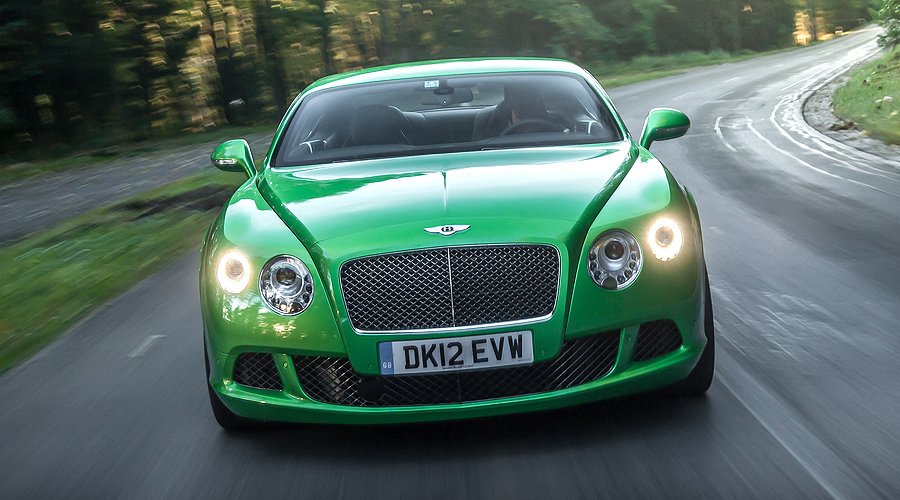
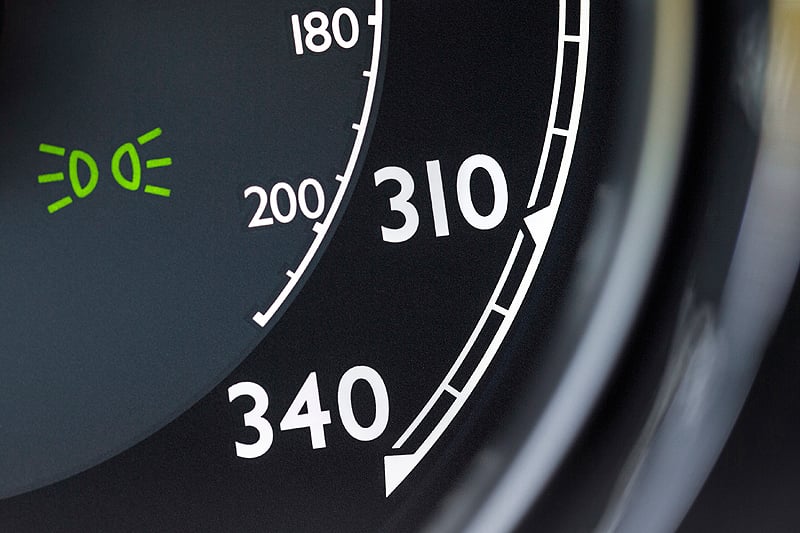
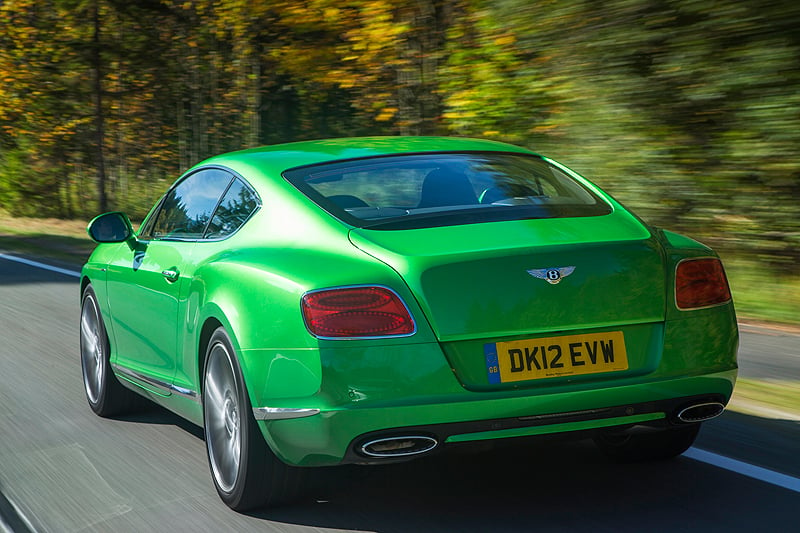
So where does all this place the latest Speed? Between the previous Supersports model and the first class lounge; and, to make the transition, one simply selects Sport. The effect is immediate: the exhaust bays like a Bavarian red deer in the rutting season, the accelerator response is heightened, the suspension firmer and the steering more direct.
For the sharp bends and switchback hills of the Obersalzberg, Sport is perfect. And any inclement condition such as rain, wet leaves or snow is handled imperceptibly by the all-wheel-drive system. That said, the two-in-one strategy has its downsides: even in comfort mode the car is too loud, and it always swaps back into automatic mode when using the paddles manually in Sport. And that evening visit to the opera really must be made in the most comfortable setting, as Sport mode is just too raw. On all occasions, though, the massive (optional) 'Carbon Silicon-Carbide' brake discs will slow the car down, whether it’s descending the Julier Pass or making that last-minute buying decision outside Prada in Bond Street. Bringing the car down from its 205mph maximum to zero, we were told, generates enough energy to power a house for six hours.
Whether this is a mews house, or a typical owner’s mansion with six bedrooms, was not made clear.
One fact on which to finish: all-new, two-door Continental GTs have improvements of up to 12% in fuel economy, range and CO2 emissions compared with previous models, helped in no small part by the introduction of the eight-speed gearbox across the range.
And, even if you are unlikely to find the new Speed as a centrefold in the next issue of Greenpeace Magazine, this car's apple green colour is a first step towards getting back in touch with nature again...
Photos: James Lipman / Thomas Salt















